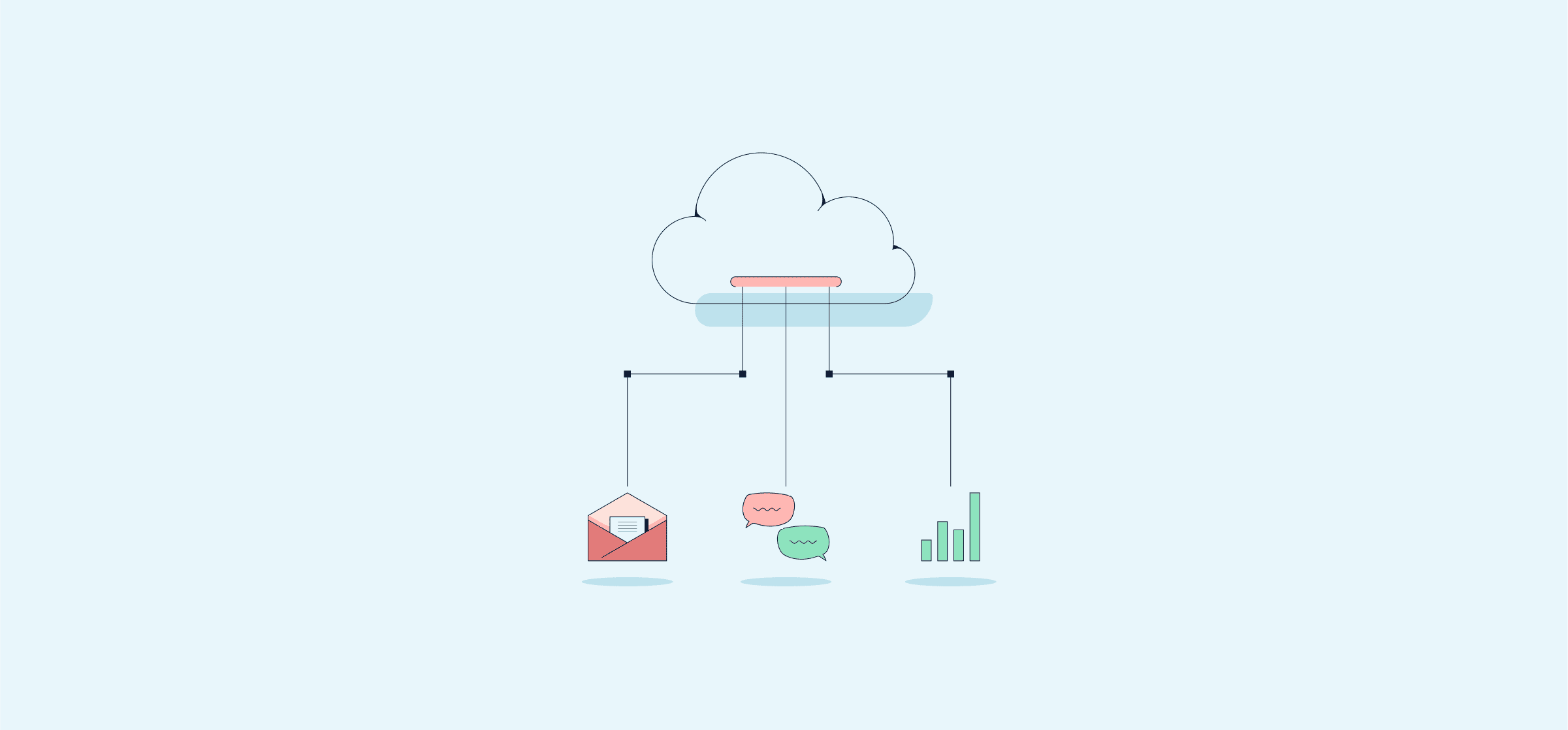The 10 Best Data Integration Tools for Agile Organizations
The data integration market is projected to reach $30.27 billion by 2030, according to data from Grand View Research. With the average organization using hundreds of SaaS applications, sometimes with overlapping purposes, data integrations are rapidly becoming an essential part of day-to-day operations.
Data integration tools allow the automation of essential processes, the centralization of data from multiple sources, and the elimination of data silos. In this guide, you’ll get a list of the 10 best data integration tools on the market to help you choose the right solution.
What are data integration tools?
Data integration tools connect software platforms to keep data in sync between them. This allows teams to have access to all the information they need from the tools they use more, even if some of that data comes from other platforms. On the surface, data integrations seem simple. Data starts in one tool and ends up in another. But there’s more going on under the hood, including:
- Real-time synchronization, which regularly checks tools for updates and carries them over near-instantly.
- Data transformation, which turns data in one tool into a format compatible with other tools.
- Automated workflows, sequences of integrations and actions that handle even complex data transfers, so you can focus on more important work.
Dedicated data integration platforms can be pretty technical, and you’ll usually need the support of an IT or software expert to set one up. But that’s not always the case. Some integration solutions are no harder to set up than any other software tool you’re already using, and they’ll serve just fine as a data integration platform.
Types of data integration tools
Here’s a quick list of some of the most popular types of data integration tools:
- ETL tools: Extract, transform, and load tools take data out of software platforms and load it into a data warehouse which is then used as the single source of truth for all other tools.
- Two-way sync: Tools like Unito create two-way relationships between data sets in multiple tools, automatically keeping data up-to-date as you work.
- iPaaS tools: Integration Platform as a Service platforms give you a single platform from which you can build integrations for a variety of tools.
- RPA platforms: Robotic Process Automation allows users to build “robot” agents that can take any action a human user can. This allows for the automation of even complex processes through multiple tools.
How to choose the right tool
Before you choose a tool, you need to evaluate the following:
- Available integrations: Does the tool support the platforms you need to integrate? Does it only support some of them?
- Ease of use: Some platforms take months to deploy and require significant technical resources, or even third-party consultants. Others can be deployed in days by a single person. Which type is a better fit for you?
- Security features: Most data integration platforms have robust security features, but some are more secure than others. Look for certifications like SOC 2 and compliance with regulations like GDPR and CCPA.
- Scalability: If you work in a large organization with significant data needs, you need a tool that’s built with larger organizations in mind.
- Cost: Quickly calculate how much you’d pay for a given data integration tool and you’ll be able to eliminate tools that don’t fit your budget.
The 10 best data integration tools
Most of these platforms have some kind of visual interface you can use for integrating data without advanced technical knowledge, and they offer similar features. Usually, choosing the right data integration tool means finding the one that has the best support for your data sources at a price point that makes sense for you.
Unito: Best no-code two-way sync platform
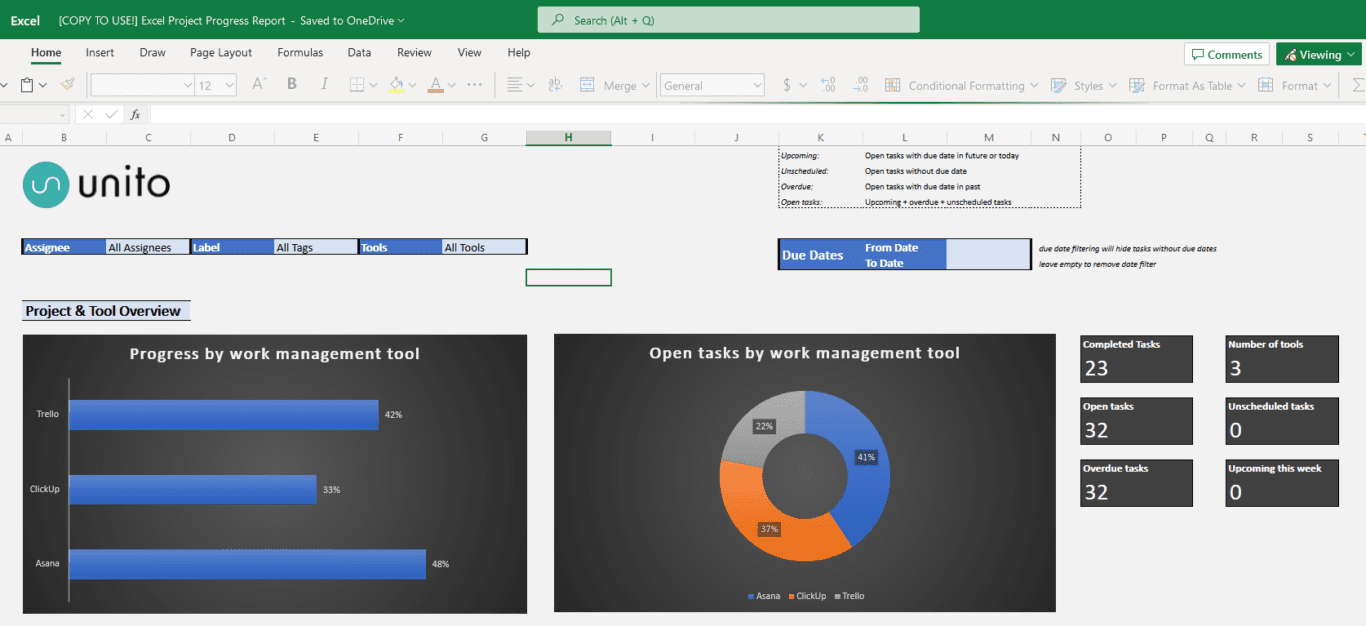
Unito is a no-code integration platform with some of the deepest two-way integrations for the most popular tools on the market, including Google Sheets, Microsoft Excel, Airtable, Asana, Trello, Jira, and more. With a single Unito flow, you can build a two-way relationship between two data sources, syncing data back and forth between them. Say you’re using an Airtable base to manage your sales pipeline and a Google Sheets spreadsheet to track all your leads. With a Unito flow, you could sync those contacts from Google Sheets to Airtable and keep them updated no matter where changes happen. So if one of your salespeople learns that a contact updated their phone number, you can have it updated across both data sources — no matter where it’s actually changed.
Best for: Real-time collaboration across tools.
Key features:
- Two-way sync across 60+ applications
- 12-minute average setup time
- Field-level mapping with custom rules
- SOC 2 Type II certified
- Historical data migration
Informatica PowerCenter
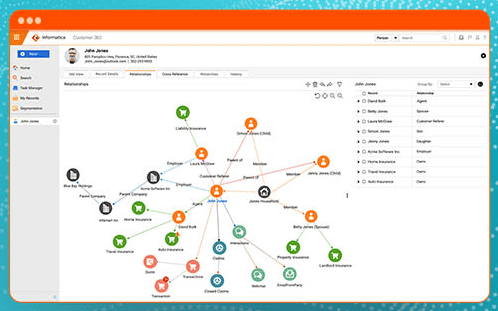
Informatica’s platform allows advanced technical users to build any kind of workflow they need, with support for over 50,000 data sources, including AWS (Amazon Web Services), Microsoft Azure, Google Cloud, Salesforce, and more. Whether you’re working through a one-time migration or need ongoing data integration, Informatica is a strong platform.
Best for: Enterprises that want to centralize information in a data warehouse.
Key Features:
- Comprehensive ETL/ELT capabilities
- Advanced data quality tools
- Enterprise security and compliance
- Big data and cloud support
AWS Glue

AWS Glue is a fully managed data integration platform that lets you extract data from multiple sources and centralize it. This platform uses Apache Spark, an open-source analytics engine for processing large amounts of data — enabling it to work through complex data integration workflows at scale without a complicated user interface. Because it’s run by Amazon, AWS Glue works seamlessly with other Amazon services you might already be using.
Best for: Organizations already using AWS infrastructure.
Key Features:
- Pay-per-use serverless model
- Automatic schema discovery
- Built-in data catalog
- Native AWS integration
Dell Boomi
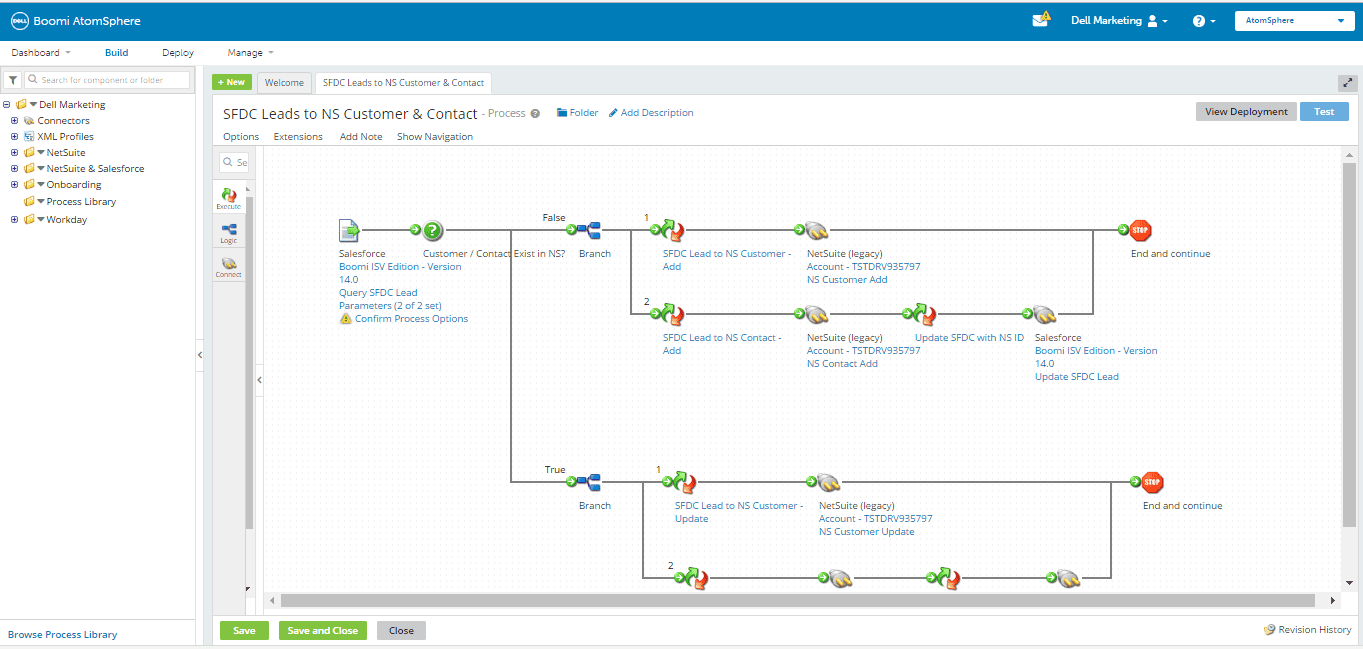
A cloud-based data integration tool from the makers of a laptop you might be using to read this article right now, Dell Boomi has a visual interface that allows anyone to build integrations quickly without any coding knowledge. This platform is used by companies like Expedia, AT&T, LinkedIn, and American Express to transfer data from over 300,000 apps.
Best for: Mid-market companies that need flexible integrations with minimal coding.
Key Features:
- Visual integration designer
- 300,000+ app connections
- Pre-built process templates
- API management tools
IBM DataStage

For large enterprises with complex data needs, IBM DataStage is a strong choice. Its visual interface is built with collaboration in mind, meaning that your entire team can plug in their data sources — no coding experience required. With its advanced data cleansing features, IBM DataStage keeps crucial information accurate and consistent, meaning your decisions can always be backed up by quality data.
Best for: Large enterprises requiring sophisticated data quality and governance capabilities with collaborative development environments.
Key Features:
- Advanced data quality and cleansing tools
- Collaborative development environment for team workflows
- Parallel processing capabilities for high-volume data
- Integration with IBM ecosystem (Watson, Cloud Pak)
- Comprehensive audit trails and lineage tracking
- Visual job design with reusable components
Pentaho
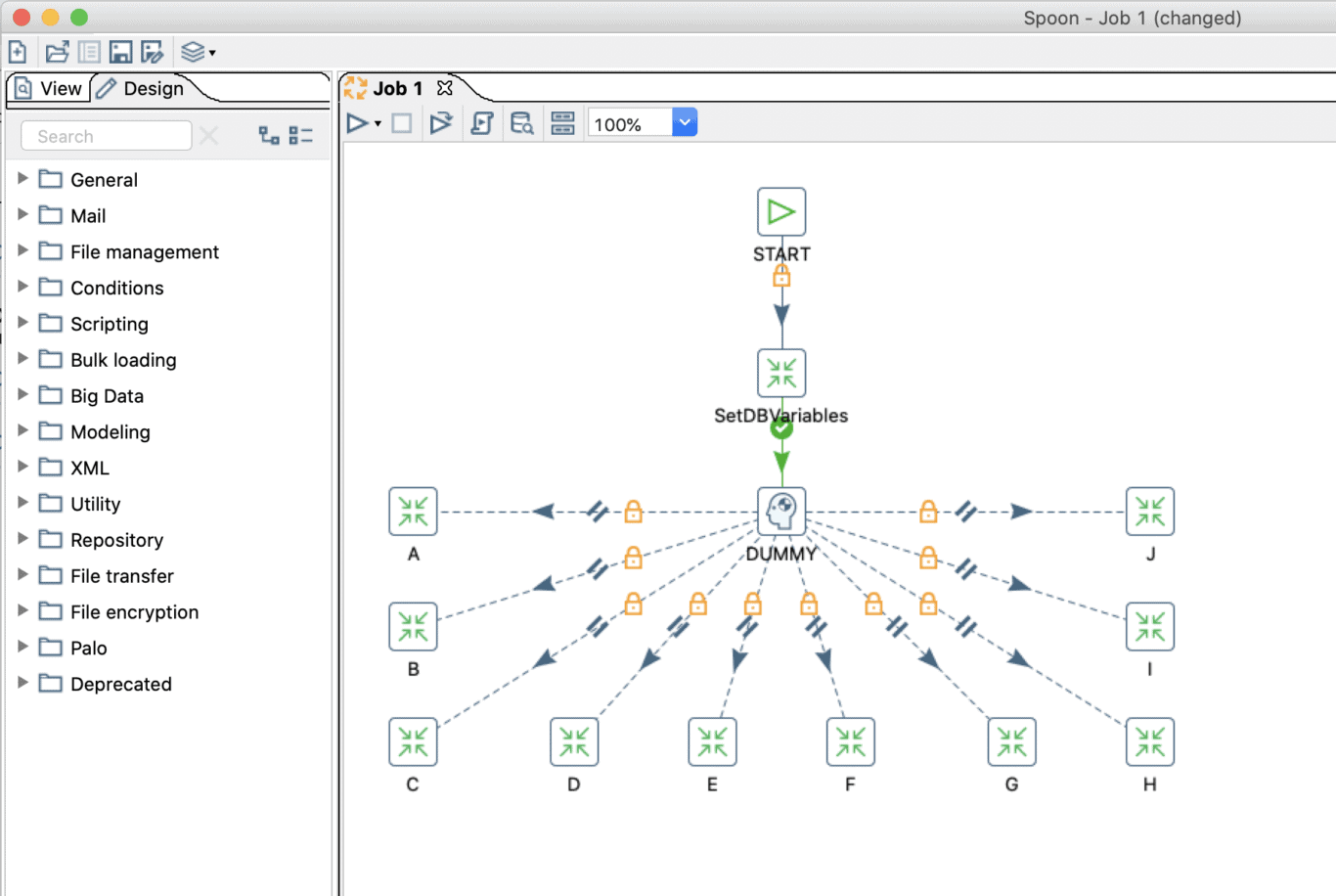
While it’s really a business intelligence platform at its core, Pentaho still has some strong features that make it a great data integration tool. Here’s something that really sets it apart from other platforms, though; there’s both a paid version for enterprise businesses and an open-source community version. So if you need a data integration solution for cheap — meaning free — it’s worth trying out the open-source version first.
Best for: Organizations needing integrated business intelligence and data integration in a single platform.
Key Features:
- Integrated BI and data integration suite
- Visual report and dashboard builders
- Open-source community edition available
- Real-time analytics capabilities
- Comprehensive data visualization tools
- ETL designer with drag-and-drop interface
SnapLogic
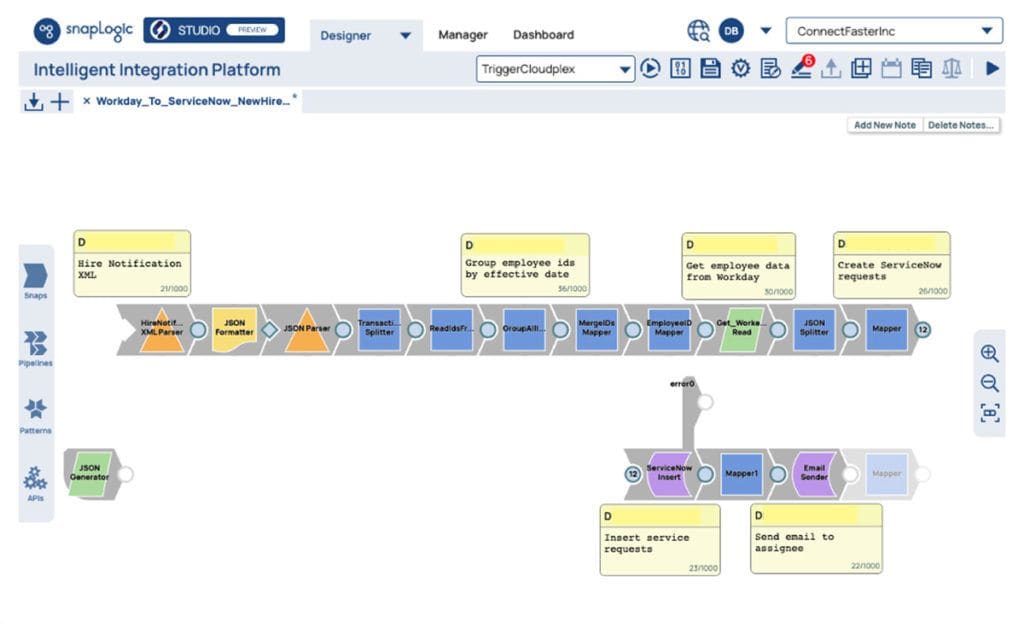
SnapLogic is a cloud-based data integration platform that empowers you to pull information from all your data sources and push it to a central location that’s always up to date. This platform uses intelligent connectors called Snaps to automate and streamline the data integration process — meaning you can deploy an integration in a fraction of the time it would take with other software. SnapLogic supports more than 500 data sources, and is used by companies like Adobe, Sony, Wendy’s, and WD-40.
Best for: Teams seeking AI-powered assistance in building and maintaining integrations with enterprise-grade capabilities.
Key Features:
- AI-assisted pipeline creation and optimization
- 500+ pre-built “Snaps” (intelligent connectors)
- Self-service data preparation tools
- Real-time and batch processing capabilities
- Built-in data governance and monitoring
- Visual pipeline designer with auto-suggestions
Zigiwave
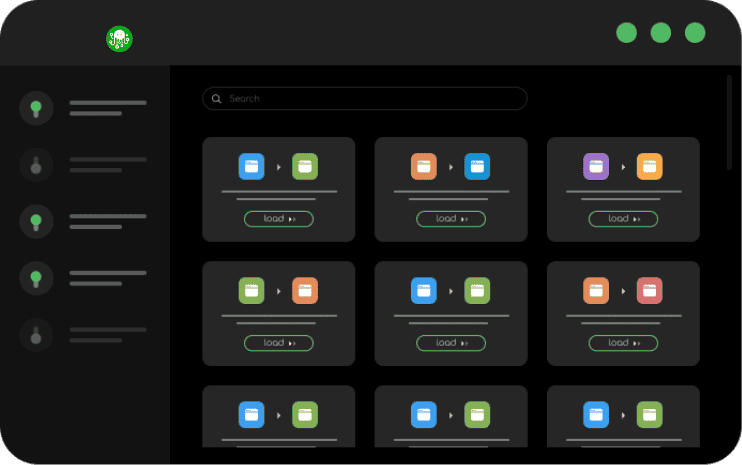
Zigiwave is a workflow management platform with data integration features that support data sources like Jira, Azure DevOps, Salesforce, Datadog, and GitHub. The platform’s cloud-based architecture means that it will scale with your organization and is flexible enough for all kinds of needs. Its simple visual interface ensures that anyone can use it, regardless of skill level.
Best for: Mid-market companies needing workflow management with integrated data synchronization for DevOps and project management tools.
Key Features:
- Workflow automation with data integration capabilities
- Support for DevOps tools (Jira, Azure DevOps, GitHub)
- Cloud-based scalable architecture
- Simple visual interface for non-technical users
- Real-time synchronization between platforms
- Custom field mapping and transformation rules
DCKAP
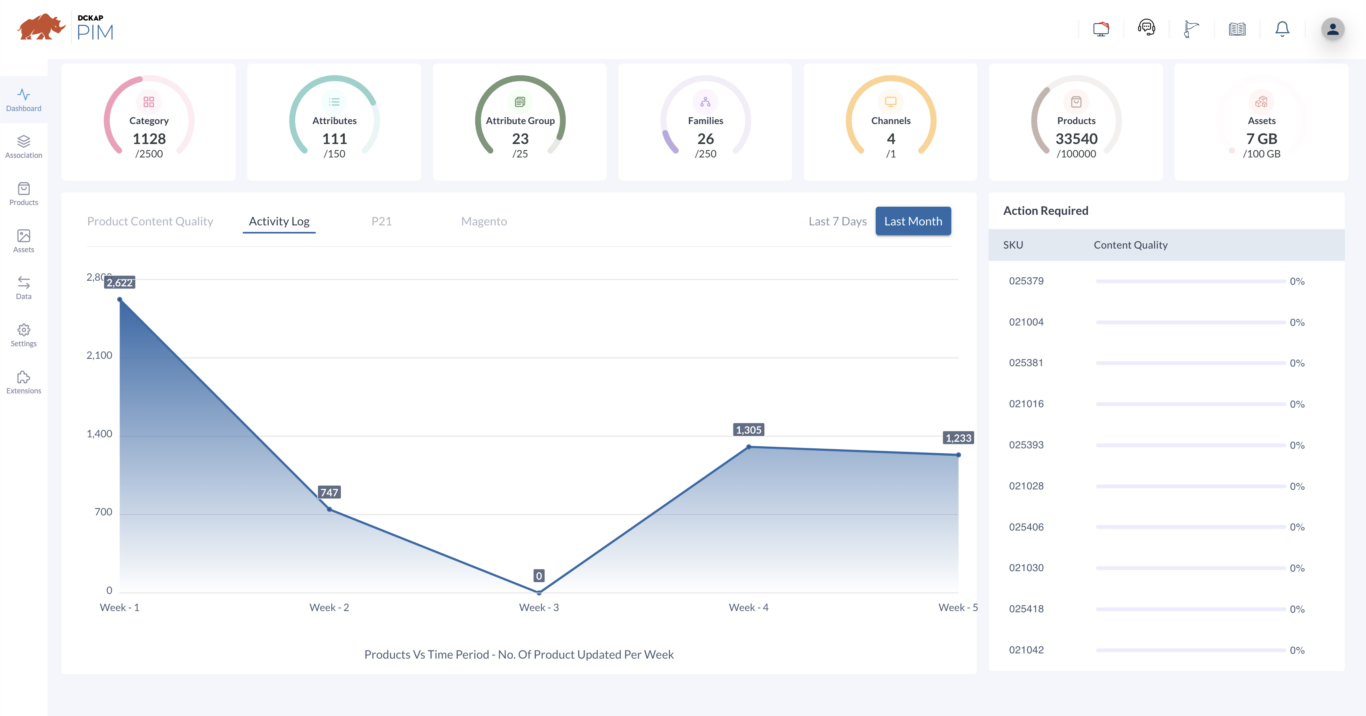
DCKAP is an easy-to-use data integration platform that enables connections between different business systems, such as CRM, e-commerce platforms, and ERP. Within DCKAP integrations, you can find HubSpot, Shopify, BigCommerce, Adobe Commerce, Epicor, and much more. This flexible and customizable tool provides updated information that helps make effective business decisions. By giving everyone access to the same accurate information, the DCKAP integrator improves communication between teams and departments.
Best for: E-commerce and retail businesses needing seamless integration between CRM, ERP, and e-commerce platforms.
Key Features:
- Pre-built connectors for e-commerce platforms (Shopify, BigCommerce, Adobe Commerce)
- ERP system integration (Epicor, SAP, NetSuite)
- CRM connectivity (HubSpot, Salesforce)
- Real-time inventory and order synchronization
- Customer data unification across touchpoints
- Automated pricing and catalog updates
Apache NiFi

Apache NiFi is an open-source, robust data integration tool with a user-friendly platform that’s best for designing, automating, and managing data flows. It’s most often used as an ETL tool — or extract, transform, load. This free open-source tool is great for technical users who want to quickly start building better data management workflows without a huge price tag.
Best for: Technical teams requiring maximum customization and control over data flows with enterprise-grade security and provenance tracking.
Key Features:
- Visual data flow design and management
- Real-time stream processing capabilities
- Extensive processor library for data transformation
- Complete data provenance and lineage tracking
- Cluster-based architecture for high availability
- Fine-grained security controls and user management
Integrate your data
Data is crucial for making better decisions at every level of an organization, from top-level executives to individual contributors. But when data is scattered across multiple sources, it’s tough to know what’s accurate and what’s out of date. With the right data integration platform, you can ensure that everyone has access to the latest data, no matter where they’re working from.
Data integration FAQ
What’s the difference between ETL and data integration?
ETL (extract, transform, load) tools move data from multiple sources to a central data warehouse. That warehouse then becomes the single source of truth, and it’s often used for analysis. Data integration creates one-to-one relationships between individual tools.
What are data integration tools?
Data integration tools usually allow business users (meaning those who don’t have advanced technical skills) to pull important data from some platforms and push it to others. Some can be more difficult to use, meaning that someone with more technical skills (like an IT professional or data engineer) needs to set them up so they’ll work properly.
Data integration tools come in different forms, including:
ETL (extract, transform, load) and reverse ETL tools.
Trigger and action automation tools.
Customer data platforms.
Two-way sync tools.
What are some examples of data integration?
Data integration is incredibly common across most organizations, so much so that you may not even be aware how it affects your daily work. Here are a few examples of workflows that rely heavily on data integration:
Customer relationship management: Working with customers creates a ton of data. There’s contact information, individual interactions, documents, deals, and more. With data integration, you can keep all your customer data at the fingertips of the people who really need it.
Project management: While some projects might exist entirely in a single tool, most need to pull data from multiple sources. With data integration, your project managers can run everything from their project management app of choice while having access to all the information their project needs.
Reporting: Data integration solutions are crucial for reporting workflows. After all, reporting is all about taking information from one source and representing it in a particular way for a particular audience. Data integration allows you to automate most of your reporting, giving you more time to focus on getting insights from your reports.
Pre-sales support: Your sales team can’t just push their way through every problem. Sometimes, they need support from an expert — like a lawyer or a developer — to answer specific questions. Other times, they just need a bit of extra data to know exactly what a prospect needs. Data integration tools are essential for this work.
Coordinated software development: Software development rarely happens in isolation anymore. These projects often require the input of project managers and stakeholders throughout the organization. Data integration tools are often essential to getting development updates and feedback to the right places.
What are some of the best data integration tools?
Usually, the best tool is the one that can integrate data for your data source of choice for the best price. Here are some of the top integration tools on the market.
Recent updates
September 5th, 2025: We added statistics about the size of the integration market in the introduction. We also reworked the first section to focus more on data integration tools rather than data integration broadly. We also added a section listing the most popular types of data integration tools. We also added selection criteria for data integration tools. We added key features and the best use case to each entry.

